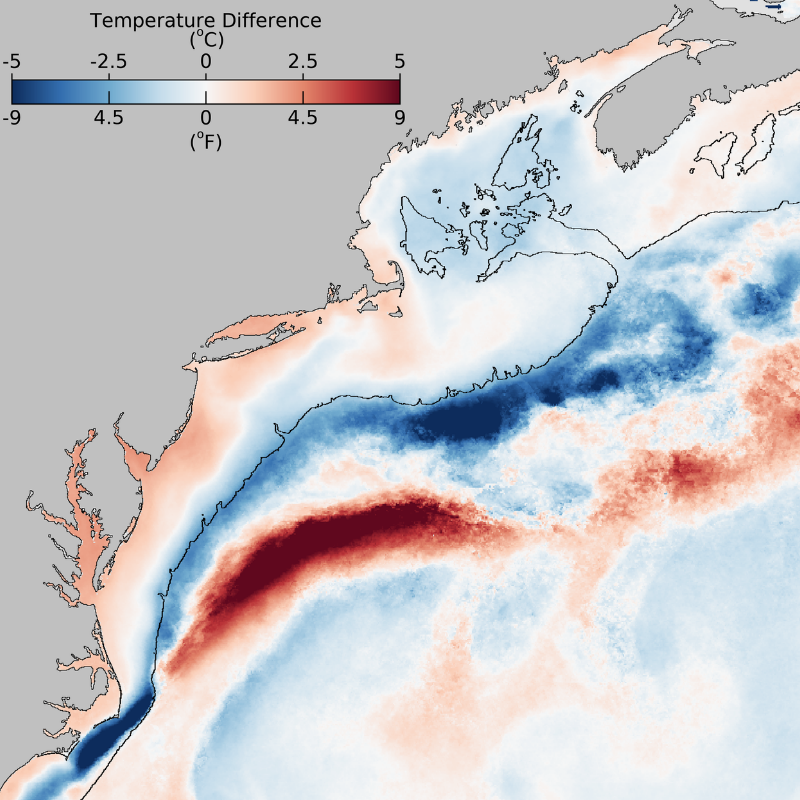
The Northeast Integrated Ecosystem Assessment (IEA) team recently published their 2025 State of the Ecosystem (SOE) reports for the Mid-Atlantic and New England regions. These reports synthesize the current status of the Northeast Shelf marine ecosystems and are developed for the New England and Mid-Atlantic Fishery Management Councils. These annual, collaboratively produced reports inform the councils about ecological, oceanographic, and socioeconomic aspects of the ecosystem—from fishing engagement to climate conditions.
This year’s Mid-Atlantic SOE was presented to the Mid-Atlantic Fishery Management Council on April 8, and the New England SOE was presented to the New England Fishery Management Council on April 16. These reports document changes, trends, and notable events as they relate to fishery management objectives, identify risks to meeting fishery management objectives, and highlight current and recent observations.
The headline story from the 2025 reports was the markedly different oceanographic and ecological conditions in the Northwest Atlantic. Increased influxes of colder and fresher northern water resulted in colder than average bottom temperatures in this area, even though globally, sea surface and air temperatures were the warmest on record. Cooler waters in the Gulf of Maine created suitable habitat for an uncommon species of Arctic Calanus, cold-loving, lipid-rich copepods that are a food source for larval fishes, forage fishes, and migrating whale species. In addition, there was a well-established cold pool in the Mid-Atlantic in 2024. The cold pool is an important habitat for many federally-managed species, like Atlantic yellowtail flounder.
A new addition to this year’s reports was “Fishing Observations”, a section of first-hand on-the-water observations from the fishing community. Fishermen noted shifting distributions of species like pollock and bluefin tuna, and a delay in the timing of catch for species such as longfin squid and black sea bass. These changes may be explained and driven by cooler water temperatures across the Northeast shelf. The Northeast IEA will continue to monitor the future impacts of cooler conditions across the Mid-Atlantic and New England ecosystems for the 2026 State of the Ecosystem Reports.
A more in-depth summary of the 2025 State of the Ecosystem reports was presented during a NOAA Library seminar series on Wednesday, May 28. This presentation can be accessed through the NOAA Library YouTube Channel.
For those who are interested in the data collection, methodology, and analyses of the indicators presented in the reports, the Northeast IEA has assembled an Indicator Catalog where visitors can read more about indicator data origin and development, view additional figures that weren’t included in the reports, and download the indicator data files.
